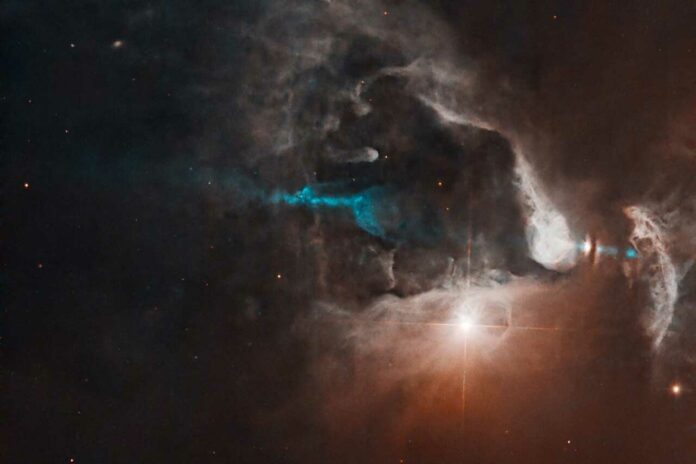NASA/ESA Hubble Space Telescope recently saw a new star emitting jets from its cocoon. These jets appear to be slicing through the gas and dust of a shining nebula.
FS Tau B is a newly forming star or protostar belonging to the multi-star system FS Tau. The star system comprises FS Tau A, the bright star-like object near the middle of the image, and FS Tau B (Haro 6-5B), the glowing object to the far right partially obscured by a dark, vertical dust lane.
FS Tau Roughly 450 light-years away in the constellations of Taurus and Auriga, Tau is part of the Taurus-Auriga constellations, a cluster of dark molecular clouds that are home to many newly formed and young stars. Hubble has seen this region before, and astronomers find it to be a promising target due to its star-forming activity.
This star nursery’s softly lighted gas and dust envelop these tiny objects. The system is exceptionally young for a star system, dating from about 2.8 million years. In comparison, the age of our Sun is roughly 4.6 billion years.
The newly forming star- FS Tau B- is encircled with a protoplanetary disc. Seen almost edge-on, the dense dust lane divides what are believed to be the disc’s lighted surfaces.
FS Tau B is probably undergoing the transition from a young variable star without nuclear fusion to a T Tauri star, which is a star-powered by hydrogen and resembles our Sun. In addition to the accretion of material from surrounding gas and dust, protostars shine due to the heat energy emitted during the collapse of the gas clouds from which they are developing. A type of star known as a variable star experiences noticeable variations in brightness over time.
With two stars in orbit around one another, FS Tau A is a T Tauri binary system in and of itself.
Another term for FS Tau B is the Herbig-Haro object. When newborn stars’ ionized gas jets collide with surrounding gas and dust clouds at high speeds, they produce luminous patches of nebulosity known as Herbig-Haro objects.
